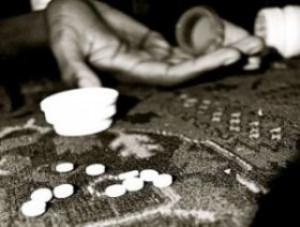REF
DRUG WAR CHRONICLE: With Ohio beset by a massive public health crisis around opioid use and overdoses — more than 4,000 Ohioans died of opioid overdoses in 2016 — the Cleveland Plain Dealer sent travel editor Susan Glaser to Amsterdam in search of innovative approaches to the problem. While there, she rediscovered Holland’s longstanding, radical, and highly-effective response to heroin addiction and properly asked whether it might be applied to good effect here.

The difference in drug-related death rates between the two countries is staggering. In the US, the drug overdose death rate is 245 per million, nearly twice the rate of its nearest competitor, Sweden, which came in second with 124 per million. But in Holland, the number is a vanishingly small 11 per million. In other words, Americans are more than 20 times more likely to die of drug overdoses than Dutch.For Plain Dealer readers, the figures that really hit home are the number of state overdose deaths compared to Holland. Ohio, with just under 12 million people, saw 4,050 drug overdose deaths in 2016; the Netherlands, with 17 million people, saw only 235.
What’s the difference? The Dutch government provides free heroin to several score hardcore heroin addicts and has been doing so for the past 20 years. Public health experts there say that in addition to lowering crime rates and improving the quality of life for users, the program is one reason overdose death rates there are so low. And the model could be applied here, said Amsterdam heroin clinic operator Ellen van den Hoogen.
“It’s been an enormous success. I think it would work elsewhere,” she told Glaser.
It already has. The Dutch program was modeled on a similar effort in Switzerland, which has also proven successful. Germany and Canada are among the several other countries with similar programs.
The Dutch approach is an example of the country’s policy of gedogen (pragmatic tolerance), the same principle that led the Dutch to pioneer quasi-legal access to marijuana in the 1980s. It is also rooted in the notion that, for some, drug addiction is a chronic disorder, not a condition to be “cured,” and one that can be treated with supervised drug use under clinical supervision. And the complete cessation of drug use need not be the ultimate goal; rather, the Dutch look for reductions in criminal activity and increases in the health and well-being of the drug users.
“It’s not a program that is meant to help you stop,” acknowledged van den Hoogen. “It keeps you addicted.”
That’s not a sentiment sits well with American moralizers, such as George W. Bush’s drug czar, John Walters, whom Glaser consulted for the story. He suggested that providing addicts with drugs was immoral and not “real treatment,” but he also resorted to lies about what the Dutch are doing.
He claimed the Dutch are “keeping people addicted for the purpose of controlling them” and that the Dutch have created “a colony of state-supported, locked-up addicts.”
Actually, the Dutch are dealing with older, hardcore addicts who have repeatedly failed to quit after repeated stints in treatment, including methadone maintenance therapy, and they are neither “controlling them” or locking them up. Instead, the people in the program show up at the clinic twice a day, get their fix, then go about their business. This heroin-assisted treatment (HAT) allows those hardcore users to live less chaotic and more productive lives.
And heroin-assisted treatment is “real treatment,” said Peter Blanken, a senior researcher with the Parnassia Addiction Research Centre in Rotterdam. He pointed out that one-quarter of program participants make a “complete recovery,” including better health and quitting illegal drugs and excessive drinking. Many others continue to use heroin, but do so with better outcomes, he said.
There is also a real safety benefit to using state-supplied pharmaceutical heroin. It’s potent, but it’s a known quantity. Users face no risk of adulteration with more dangerous drugs, such as fentanyl, which is deeply implicated in the current US overdose crisis.
In the current political atmosphere in the United States, providing heroin to hardcore addicts is a hard sell indeed. Other, lesser, harm reduction interventions, such as needle exchanges remain controversial, and the country has yet to see its first officially sanctioned safe injection site. And drug decriminalization, which has led to a dramatic reduction in heroin addiction and overdose deaths in Portugal, remains off the table here, too. But with an annual drug overdose death toll of more than 50,000 people a year, it may time to start asking how many more Americans we are willing to sacrifice on the altar of moralistic drug prohibition.

